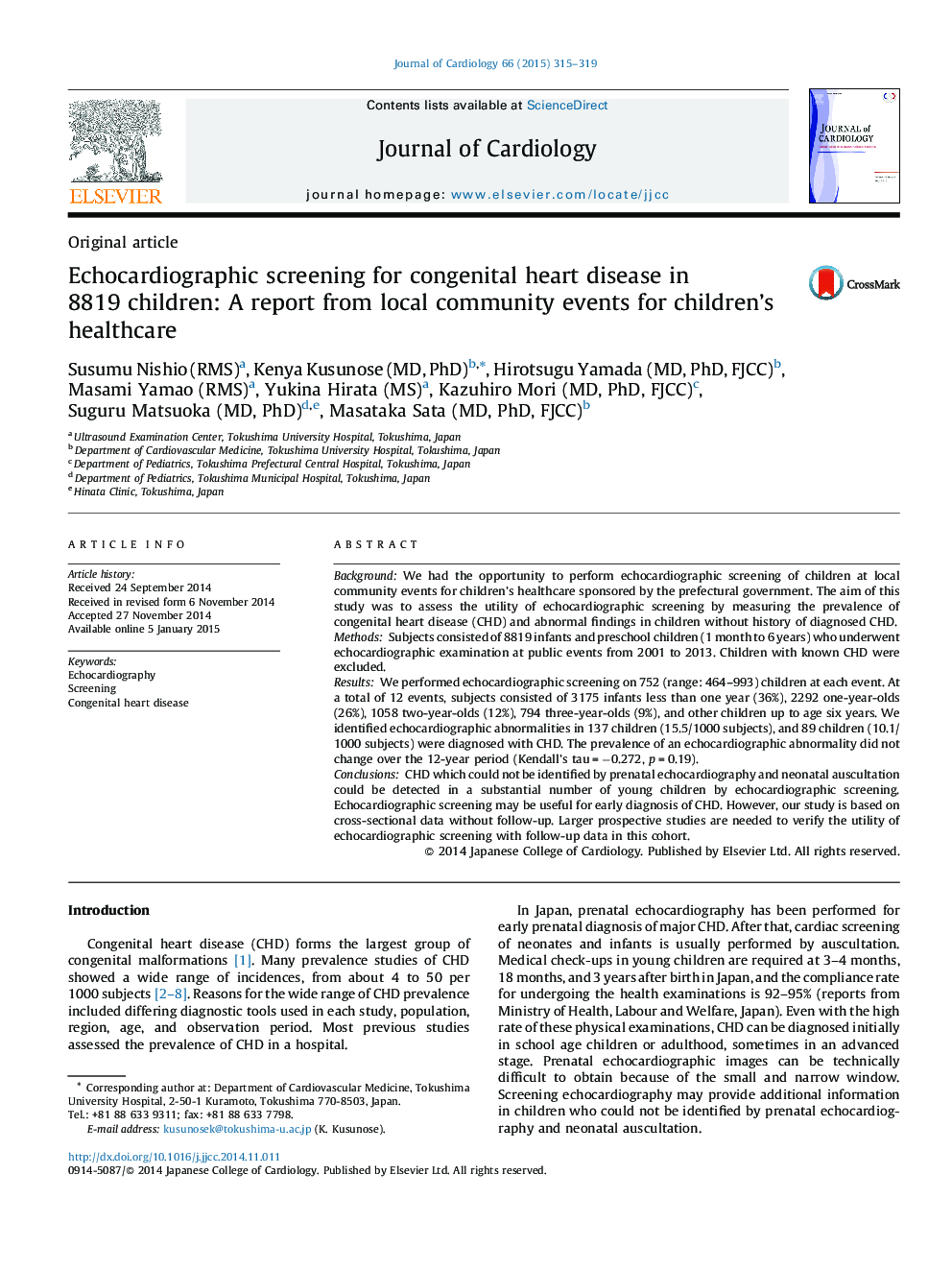| Article ID | Journal | Published Year | Pages | File Type |
|---|---|---|---|---|
| 2962925 | Journal of Cardiology | 2015 | 5 Pages |
BackgroundWe had the opportunity to perform echocardiographic screening of children at local community events for children's healthcare sponsored by the prefectural government. The aim of this study was to assess the utility of echocardiographic screening by measuring the prevalence of congenital heart disease (CHD) and abnormal findings in children without history of diagnosed CHD.MethodsSubjects consisted of 8819 infants and preschool children (1 month to 6 years) who underwent echocardiographic examination at public events from 2001 to 2013. Children with known CHD were excluded.ResultsWe performed echocardiographic screening on 752 (range: 464–993) children at each event. At a total of 12 events, subjects consisted of 3175 infants less than one year (36%), 2292 one-year-olds (26%), 1058 two-year-olds (12%), 794 three-year-olds (9%), and other children up to age six years. We identified echocardiographic abnormalities in 137 children (15.5/1000 subjects), and 89 children (10.1/1000 subjects) were diagnosed with CHD. The prevalence of an echocardiographic abnormality did not change over the 12-year period (Kendall's tau = −0.272, p = 0.19).ConclusionsCHD which could not be identified by prenatal echocardiography and neonatal auscultation could be detected in a substantial number of young children by echocardiographic screening. Echocardiographic screening may be useful for early diagnosis of CHD. However, our study is based on cross-sectional data without follow-up. Larger prospective studies are needed to verify the utility of echocardiographic screening with follow-up data in this cohort.
